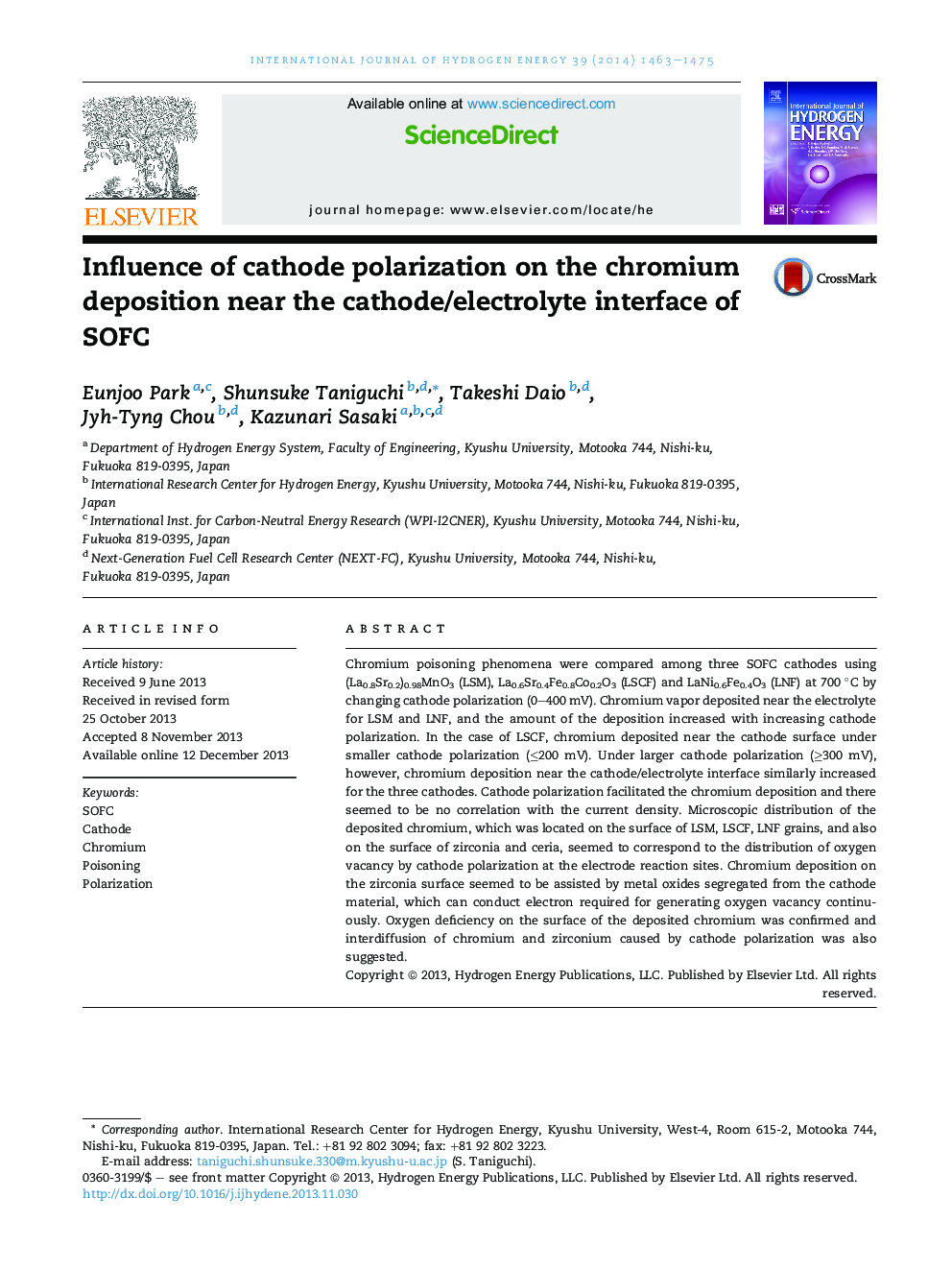| Article ID | Journal | Published Year | Pages | File Type |
|---|---|---|---|---|
| 7720918 | International Journal of Hydrogen Energy | 2014 | 13 Pages |
Abstract
Chromium poisoning phenomena were compared among three SOFC cathodes using (La0.8Sr0.2)0.98MnO3 (LSM), La0.6Sr0.4Fe0.8Co0.2O3 (LSCF) and LaNi0.6Fe0.4O3 (LNF) at 700 °C by changing cathode polarization (0-400 mV). Chromium vapor deposited near the electrolyte for LSM and LNF, and the amount of the deposition increased with increasing cathode polarization. In the case of LSCF, chromium deposited near the cathode surface under smaller cathode polarization (â¤200 mV). Under larger cathode polarization (â¥300 mV), however, chromium deposition near the cathode/electrolyte interface similarly increased for the three cathodes. Cathode polarization facilitated the chromium deposition and there seemed to be no correlation with the current density. Microscopic distribution of the deposited chromium, which was located on the surface of LSM, LSCF, LNF grains, and also on the surface of zirconia and ceria, seemed to correspond to the distribution of oxygen vacancy by cathode polarization at the electrode reaction sites. Chromium deposition on the zirconia surface seemed to be assisted by metal oxides segregated from the cathode material, which can conduct electron required for generating oxygen vacancy continuously. Oxygen deficiency on the surface of the deposited chromium was confirmed and interdiffusion of chromium and zirconium caused by cathode polarization was also suggested.
Related Topics
Physical Sciences and Engineering
Chemistry
Electrochemistry
Authors
Eunjoo Park, Shunsuke Taniguchi, Takeshi Daio, Jyh-Tyng Chou, Kazunari Sasaki,
